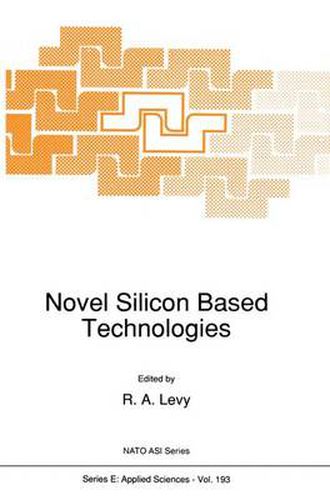Readings Newsletter
Become a Readings Member to make your shopping experience even easier.
Sign in or sign up for free!
You’re not far away from qualifying for FREE standard shipping within Australia
You’ve qualified for FREE standard shipping within Australia
The cart is loading…






This title is printed to order. This book may have been self-published. If so, we cannot guarantee the quality of the content. In the main most books will have gone through the editing process however some may not. We therefore suggest that you be aware of this before ordering this book. If in doubt check either the author or publisher’s details as we are unable to accept any returns unless they are faulty. Please contact us if you have any questions.
Silicon, as an electronic substrate, has sparked a technological revolution that has allowed the realization of very large scale integration (VLSI) of circuits on a chip. These 6 fingernail-sized chips currently carry more than 10 components, consume low power, cost a few dollars, and are capable of performing data processing, numerical computations, and signal conditioning tasks at gigabit-per-second rates. Silicon, as a mechanical substrate, promises to spark another technological revolution that will allow computer chips to come with the eyes, ears, and even hands needed for closed-loop control systems. The silicon VLSI process technology which has been perfected over three decades can now be extended towards the production of novel structures such as epitaxially grown optoelectronic GaAs devices, buried layers for three dimensional integration, micromechanical mechanisms, integrated photonic circuits, and artificial neural networks. This book begins by addressing the processing of electronic and optoelectronic devices produced by using lattice mismatched epitaxial GaAs films on Si. Two viable technologies are considered. In one, silicon is used as a passive substrate in order to take advantage of its favorable properties over bulk GaAs; in the other, GaAs and Si are combined on the same chip in order to develop IC configurations with improved performance and increased levels of integration. The relationships between device operation and substrate quality are discussed in light of potential electronic and optoelectronic applications.
$9.00 standard shipping within Australia
FREE standard shipping within Australia for orders over $100.00
Express & International shipping calculated at checkout
Stock availability can be subject to change without notice. We recommend calling the shop or contacting our online team to check availability of low stock items. Please see our Shopping Online page for more details.
This title is printed to order. This book may have been self-published. If so, we cannot guarantee the quality of the content. In the main most books will have gone through the editing process however some may not. We therefore suggest that you be aware of this before ordering this book. If in doubt check either the author or publisher’s details as we are unable to accept any returns unless they are faulty. Please contact us if you have any questions.
Silicon, as an electronic substrate, has sparked a technological revolution that has allowed the realization of very large scale integration (VLSI) of circuits on a chip. These 6 fingernail-sized chips currently carry more than 10 components, consume low power, cost a few dollars, and are capable of performing data processing, numerical computations, and signal conditioning tasks at gigabit-per-second rates. Silicon, as a mechanical substrate, promises to spark another technological revolution that will allow computer chips to come with the eyes, ears, and even hands needed for closed-loop control systems. The silicon VLSI process technology which has been perfected over three decades can now be extended towards the production of novel structures such as epitaxially grown optoelectronic GaAs devices, buried layers for three dimensional integration, micromechanical mechanisms, integrated photonic circuits, and artificial neural networks. This book begins by addressing the processing of electronic and optoelectronic devices produced by using lattice mismatched epitaxial GaAs films on Si. Two viable technologies are considered. In one, silicon is used as a passive substrate in order to take advantage of its favorable properties over bulk GaAs; in the other, GaAs and Si are combined on the same chip in order to develop IC configurations with improved performance and increased levels of integration. The relationships between device operation and substrate quality are discussed in light of potential electronic and optoelectronic applications.